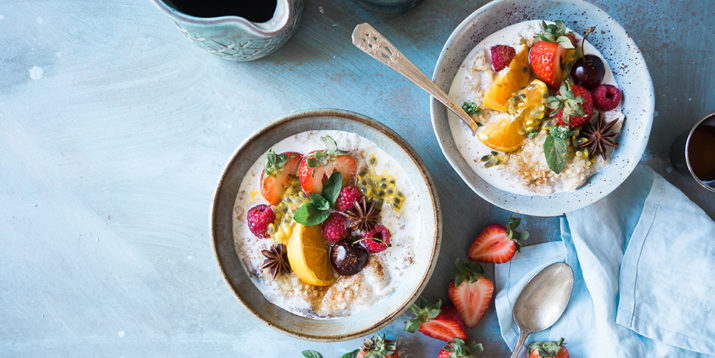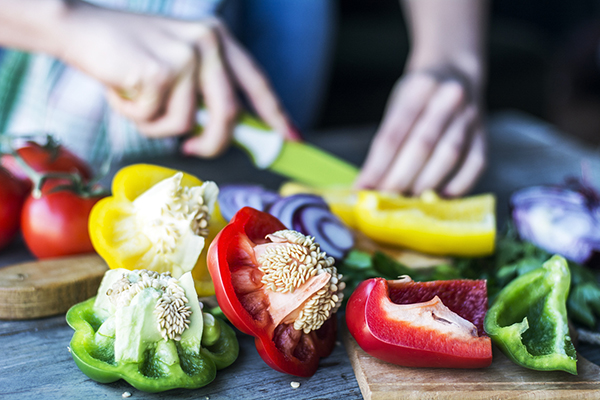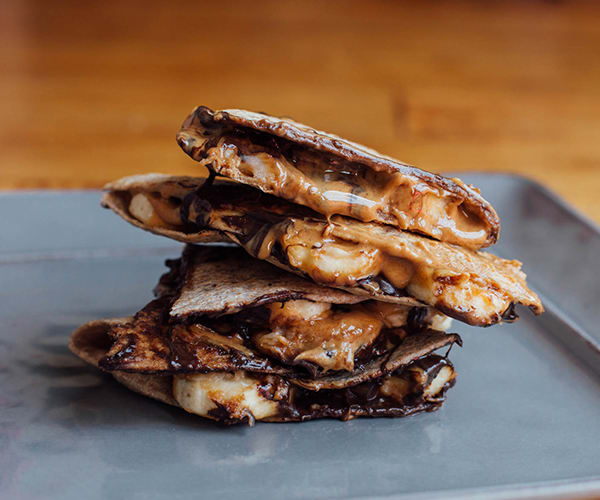
Let’s face it: “Healthy eating” has a PR problem.
If you’re new to eating healthy, that phrase may bring to mind an unappetizing image of a boring plate of salad topped with grilled chicken next to a piece of fruit.
It’s what you might scoff at as “rabbit food.”
Yes, foods like fruits, veggies, protein, and whole grains are part of a balanced, healthy diet, but that doesn’t mean you’re stuck with plain oatmeal and a banana for breakfast every day.
(Pro tip: A daily Shakeology is an easy, delicious way to jazz up your morning meal. Find your favorite recipe here!)
Whole foods can act as a blank canvas for exciting flavors and textures.
It’s all about targeting your senses by maximizing the deliciousness of your healthy meals, so you’ll want to eat them again and again.
First, let’s explore these senses and how they affect your eating experience.
How Your Senses Affect Your Eating Experience

Eating is all about the senses. Taste, smell, sight, touch, and even sound all play into our enjoyment of food.
Taste
Taste is crucial to appreciating food. You have 10,000 taste buds that are evolutionarily wired to like sweet, salty, and rich (aka, fatty) foods because they contain lots of calories and nutrients compatible with survival.
A study by Yale researchers found that mice genetically bred without the ability to taste sweetness don’t prefer sugar water any more than plain water at first.
After a few days, they learned to prefer the sugar water, likely because it contained a prized reward: calories.
Drinking the sugar water also prompted the release of dopamine, which plays a major role in the reward-motivated behavior of the brain.
True, humans are more complex than mice, but this experiment indicates it’s possible for taste preferences to be rewired.
Smell
Smell works closely with taste to create flavor. There are five tastes (sweet, salty, sour, bitter, umami), but there are thousands of smells to help you recognize what you’re eating.
Smell may also help your brain decide if it should burn or store calories.
An experiment by UC Berkeley researchers found that mice who had their smelling abilities removed could stay trim while eating a high-fat diet, despite eating the same amount as mice with normal smelling abilities.
The science is very new, but if it can translate to human beings, smell could be a target for future weight-loss regimens.
Touch

In the case of eating, touch can be referred to as texture. Texture is worth mentioning because a lot of our comfort foods rely on creamy and crispy textures.
You “taste” fat as the creaminess in cheese, ice cream, and avocado. Crispy textures are common in cookies, fries, and chips.
Both textures can be leveraged to make healthy food tasty.
In the mood for something cold and creamy? Try these recipes:
Sight
Sight counts; we eat as much with our eyes as we do with our mouths.
There’s a reason why food videos and photos on social media are so popular!
Another reason to add all kinds of color to your cooking!
Sound
Sound can also play a role in your eating experience. You probably know quite a few people who would shun soggy fries and limp bacon, and who can blame them?
The crispiness and crunchiness of some foods can be critical to their enjoyment.
We may have evolved to prefer crunch because it’s a sign of freshness.
A lot of food companies capitalize on this by selling chips, crackers, pretzels, and chocolate chip cookies.
You can capitalize on crunch in your favor when you make healthy snacks like crispy baked zucchini fries.
Sound can negatively affect your food experience, too. Non-food-related sounds such as a noisy restaurant can distract you and depress your overall enjoyment of the meal.